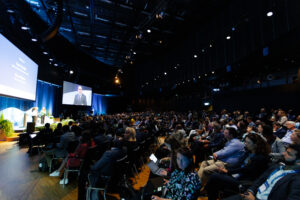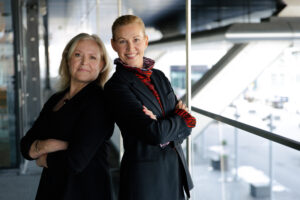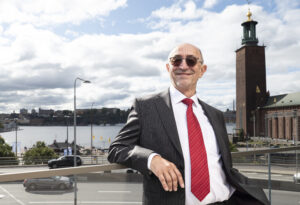Pontso ´s water journey – part 2
A battle is ongoing, and the quest is water
Background
Recently, I was on a tour of Israel. A high impact organization, En-novate, and a private bank, Investec, made this trip possible by identifying 14 other agriculture entrepreneurs plus myself as the best agriculture entrepreneurs in South Africa for 2017.
Israel is not a large country in terms of surface area when you’re from South Africa, because it is about as big as one of our national parks, the Kruger National Park. Save for the fact that the big five: lion, elephant, rhinoceros, wildebeest, and leopard can be spotted at this reserve, I am inclined to think that a lot people from across the globe seem to think that most Africans live with wild life as pets – which is a pet peeve at times, although makes way for harmless fun when one realises the ignorance – But, I have an interesting observation I wish to share relating to one of the site visits in Israel.
Site visit and historical perspectives
The place is called Masada, or, as the locals call it, Metsada. Most information about the place can be sourced online, really: that it is a world heritage site, it has a cable way, it overlooks the Dead Sea, etc; however, one cannot help but marvel at the landscape overlooking the Jordanian mountain range and the looking at the Dead Sea with full knowledge that it lies 400m below sea level.
Upon realising that there were actually inhabitants on the rhomboid shaped mountain top once upon a time, an entire delegation of South Africans, all had one question: how did the inhabitants get water and take care of their sanitation needs when the next lake is a high salt content lake with no aquatic life, the area is in the middle of a desert and, these people lived atop a mountain when the engineering technology was not as sophisticated as it is in modern-day Israel today? This was a question baffling the Roman Empire at the time, as, they had embarked on an ambitious empire expansion plan at a time in the area’s history. Imagine you’re a Roman soldier in full armour, basking in the desert heat, with no water to drink and looking at the top you witness a woman washing linen…think about that for a second.
From a military strategic perspective, the placement of a people atop a mountain makes sense during a time when the most sophisticated form of weaponry is a catapult. Think, Moshoeshoe with the Basotho atop Thaba Bosiu (now found in present day Lesotho) and his people actively keeping intruders out of his camp during difaqane (mfecane), or the great wars in southern Africa of the 1800s, by rolling boulders down the slopes. In the context of Masada, Roman Soldiers would catapult flaming rocks and these had little impact of the natives, who instead waited for them to cool down and roll them back down the mountain.
This is not why I am sharing this experience, however.
Interesting solutions from history
It turns out that King Herod was a closet hydraulic engineer and figured out that the flash floods that happen once every few years can be harvested and the water stored for long periods of time in some of the chambers on the sides of the mountain. This water would be used for all the inhabitants’ needs and the micro-ecology atop the geological formation.
Many indigenous groups living in southern Africa had, for the longest time, figured out how to survive periods of cyclic floods and droughts: the Khoi and San using emptied ostrich eggs and placing them at specific locations in the desert (under a tree, near the root base, possibly; for cooling), the Bantu speaking people realising that water downstream of a river may not be used for sanitation, hence the idiom ‘o se nyele sediba’, which, loosely transliterated means do not make number two in the lake…
What are the lessons here?
- Necessity is the mother of invention – there has to be a need for a solution to an evident problem so that a new way of doing things may be ushered into a specific period in history.
- It is natural to make use one’s terrain in order to survive the harsh realities of nature. Sun Tsu alludes to this simple fact by stating that a general who is keenly aware of the geography within which his army has to navigate will win a battle.
Water is a common necessity for every one. If anything, an appreciation of the infrastructure and effort needed to maintain and keep track of the nourishment and depletion of natural and man-made water retaining structures and bodies needs to be taught in a way to the public. This, because the reality of it is that in remote areas access to water resources may be limited, and when upgraded, concepts such as putting a price to a sip of water come off as foreign because at base, water is natural and cannot exactly be owned by anyone, let alone be paid for. The information about dam levels, catchments, rainfall data, etc, is openly and widely available. However, when one lives in a rural community the odds of them getting access to such information, be it by gazette, post, or online retrieval, are often slim to none. The downside to this is that bureaucracy and technocracy have a knack for managing the public under the guise of professionalism, and that is fine when everyone knows what the -crat is on about; which is not always the case when one goes to a rural community. Also, the rate at which globalization occurs is quite rapid in some places, compared to what other places can deliver on. Therefore, concepts like 60kl of water having a cost do not matter when historic injustices have dealt with one for so long that they cannot educate themselves about harvesting water resources, improving their access, or on changing trends; which is tantamount to not knowing the terrain and therefore losing the battle.
Surely there is a need to be catered for here, and something can be done so that as parts of the globe move towards having a global community remote areas get equipped to not only with how to access information about water resources and why there are things such as cost implications to maintenance of, but also knowledge of what it all means and what can be done with it.
How can we conclude?
Education, consistently inculcated into the public domain will likely do wonders for and a community enriched with basic know how means less of dead weight in pushing for a global (read possible) community. Yes, an educated class may find it worthy to pay for its sins by setting up a scheme to provide access to water but to what ends if the community will not be able to sustain itself when the messiahs have left for one reason or another? At least so that rural communities can be able to provide for themselves adequate water supplies, responsibly. Let us find within ourselves what can be done to make effective, and efficient use of it in our lifetime through empowerment. This is our struggle, and ours is a revolution of combining our talents and skills to carve out the best possible ways to manage.



